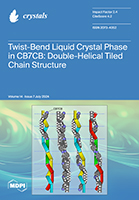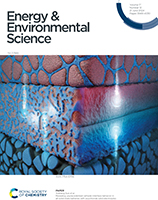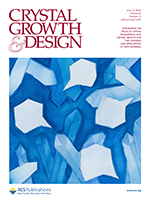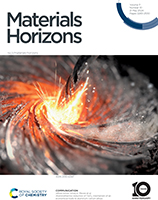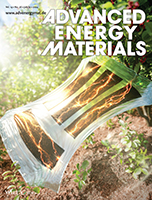The structure of the twist-bend (TB) phase of the bent dimer CB7CB and its mixtures with 5CB is characterized, revealing a hidden invariance of the self-assembly of the TB structure. Remarkably, the distance along the length for a single turn of this helix is given by 2πRmol, where Rmol is the radius of the bend curvature of a single all-trans CB7CB molecule. Read more »
Journal Covers
Revealing unprecedented cathode interface behavior in all-solid-state batteries with oxychloride solid electrolytes
This research provides crucial insights into the innovative design of high-performance all-solid-state batteries (ASSLBs) based on the promising lithium tantalum oxychloride (LTOC) solid electrolytes. Read more »
Engineering Lipophilic Aggregation of Adapalene and Adamantane-Based Cocrystals via van der Waals Forces and Hydrogen Bonding
Adamantanes are emerging building blocks for active pharmaceutical ingredients. In this work, we sought to understand how systematic modification of the hydrophobic cage in adamantanes could result in changes to crystal packing in single and multicomponent organic solids. Read more »
Two-dimensional perovskite templates for durable, efficient formamidinium perovskite solar cells
When the lattice-matched 2D perovskite BA2FAPb2I7 (red) is incorporated into a yellow-phase FAPbI3 matrix (yellow), the 2D crystallites present a perovskite-like surface, which serves as a template for the FAPbI3 to convert to its photoactive phase (black). The resulting phase-stabilized FAPbI3 shows substantially improved optoelectronic properties and exceptional stability under 85°C and sunlight. Read more »
Direct Observation of Room-Temperature Magnetic Skyrmion Motion Driven by Ultra-Low Current Density in Van Der Waals Ferromagnets
Researchers demonstrate current-driven magnetic skyrmion motion in van der Waals ferromagnets at room temperature. The skyrmion motion presents ultra-low critical current density to activate their dynamics, thanks to minimized defects in the van der Waals gap. The findings will provide a new platform for spintronics application in the future. Read more »
Aluminothermic reduction of CeO2: Mechanism of an economical route to aluminum–cerium alloys
In this study, we demonstrate a novel approach to producing Al–Ce alloys by reducing CeO2 in liquid aluminum at 95% reduction efficiency. This work provides the basis of an economic route to producing high-strength Al–Ce alloys with enhanced dispersion strengthening from embedded Al2O3 particles. Read more »
Establishing Co-Continuous Network of Conjugated Polymers and Elastomers for High-Performance Polymer Solar Cells with Extreme Stretchability
Researchers developed intrinsically stretchable organic solar cells (IS-OSCs) with exceptional mechanical robustness, by constructing co-continuous networks of conjugated polymers (D18) and elastomers (SEBS) in photoactive layers. The resulting IS-OSCs preserve 86% of their initial efficiency at 50% strain, demonstrating potential for wearable applications. Read more »
Nitrogen-fixing organelle in a marine alga
A nitrogen-fixing organelle, or “nitroplast,” has been identified in a marine alga on the basis of intracellular imaging and proteomic evidence. This discovery sheds light on the evolutionary transition from endosymbiont to organelle. The image depicts the cell architecture and synchronized cell division of the alga Braarudosphaera bigelowii with nitroplast UCYN-A (large brown spheres). Read more »
Novel modifications of PARP inhibitor veliparib increase PARP1 binding to DNA breaks
The catalytic activity of PARP1 is associated with DNA damage detection and repair among other cellular functions. We describe efforts to modify the allosteric properties of veliparib, a potent catalytic inhibitor of PARP1. These compounds highlight a unique way to trigger PARP1 retention on DNA breaks and open a path to unveil the pharmacological benefits of such inhibitors with novel properties. Read more »
Magnetically Selective Versatile Transport of Microrobotic Carriers
Field-driven transport systems offer the possibility of biofunctionalized carriers for microrobotics, biomedicine, and cell delivery. Here, researchers show how magnetic fields may selectively manipulate and drive microrobotics along a patterned micromagnet. Different-sized magnetic carriers move in multiple directions, including selective rotation and bidirectional movement. Such steering systems can direct the delivery of drugs or cells into artificial microvascular channels. Read more »
- « Previous Page
- 1
- 2
- 3
- 4
- 5
- …
- 21
- Next Page »
